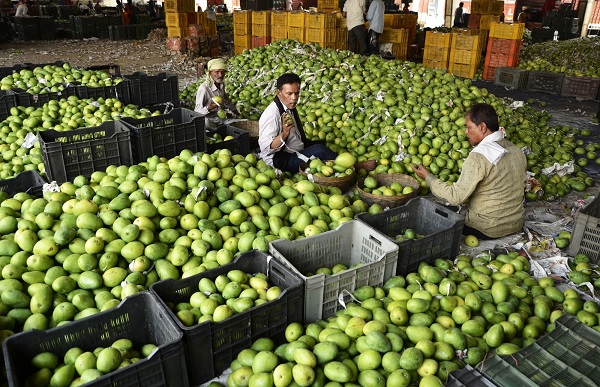
New Delhi, (Asian independent) In the season of mangoes and lychees from Bihar flooding the domestic markets and some of it, especially the Shahi Lychee, lined up for exports, arsenic contamination through food trade remains a lesser discussed issue.
This season, a private carrier has carried 100 tonnes of lychee from Darbhanga in Bihar to various parts of the country, which is about four times the quantity carried as compared to the last year.
While drinking water is known to create significant health risk in arsenic hazard areas, the role of exposure to arsenic through food intake is less well understood, including the impact of food trade. But this is not a problem restricted to India and, in fact, a study has highlighted the need to better understand the relative risk of arsenic exposure through food intake, considering the influence of growing trade and increased groundwater reliance for crop production across the globe.
Long term ingestion of arsenic is reported to lead to several adverse human health effects, including cancer, skin lesions, developmental effects, cardiovascular disease, neurotoxicity, and diabetes. There is clear evidence that irrigation with groundwater contaminated with geogenic arsenic causes arsenic to accumulate in soil and subsequently in crops through the water-soil-plant uptake pathway, a study, ‘Human arsenic exposure risk via crop consumption and global trade from groundwater-irrigated areas’ said.
The researchers used the best available datasets on crop production, irrigation, groundwater arsenic hazard, and international crop trade flows, to estimate that globally 17.2 per cent of irrigated harvested area (or 45.2 million hectares) of 42 main crops are grown in arsenic hazard areas, contributing 19.7 per cent of total irrigated crop production, or 418 million metric tons (MMT) per year of these crops by mass.
Two-thirds of this area is dedicated to the major staple crops of rice, wheat, and maize (RWM) and produces 158 MMT per year of RWM, which is 8.0 per cent of the total RWM production and 18 per cent of irrigated production.
“More than 25 per cent of RWM consumed in the South Asian countries of India, Pakistan, and Bangladesh, where both arsenic hazard and degree of groundwater irrigation are high, originate from arsenic hazard areas,a the research, published in IOPScience Journal, had pointed out.
“Trade plays a critical role in redistributing risk, with the greatest exposure risk borne by countries with a high dependence on food imports, particularly in the middle-east and small island nations for which all arsenic risk in crops is imported,” it said.
The intensifying climate variability and population growth may increase reliance on groundwater irrigation, including in arsenic hazard areas and that the results show that RWM harvested area could increase by 54.1 million hectares (179 per cent increase over current risk area), predominantly in South and Southeast Asia.
“India’s eastern states have a lot of arsenic problems, especially West Bengal, Bihar, eastern Uttar Pradesh etc. while the northwestern plains – that see major exports – comprising Punjab, Haryana and western Uttar Pradesh witness comparatively lesser problem of arsenic,” said Soumya Dutta, an activist with Beyond Copenhagen, a think tank, who has also kept track of WTO deals especially with water and agriculture.
In eastern India, there are certain fruits such as mangoes and Lychee / litchi that are exported, Dutta said and added, “These need to be tested for arsenic contamination, lest the end-user, even if in the domestic market, is kept in the dark.”
However, Piyush Mohapatra, senior programme coordinator with Toxic Links, a research organization, tried to dissuade the fears. aceWe have robust regulations as promulgated by the Food Safety and Standards Association of India (FSSAI). It includes restrictions about arsenic levels in wide ranging food items. So, anyone importing or exporting any food items will need to follow this regulation.”
But, whether or not it is implemented, that needs to be investigated, Mohapatra said. “If not being done, there should be periodic monitoring and it should be widely publicised for public consumption.”







